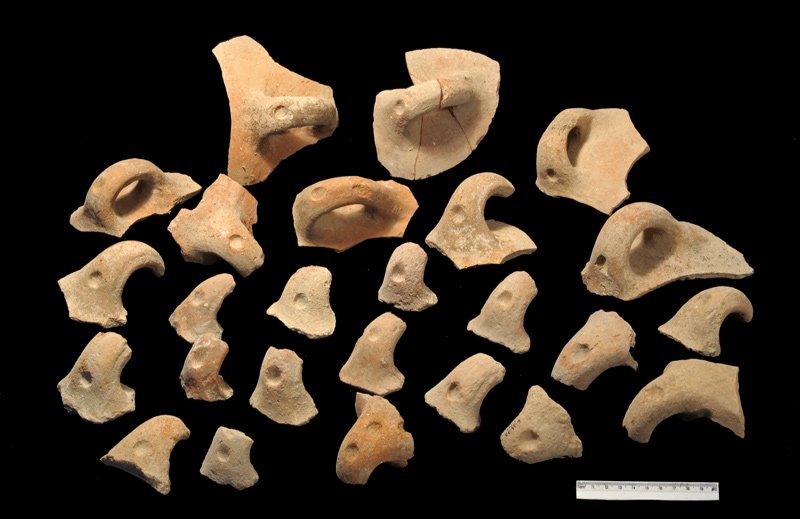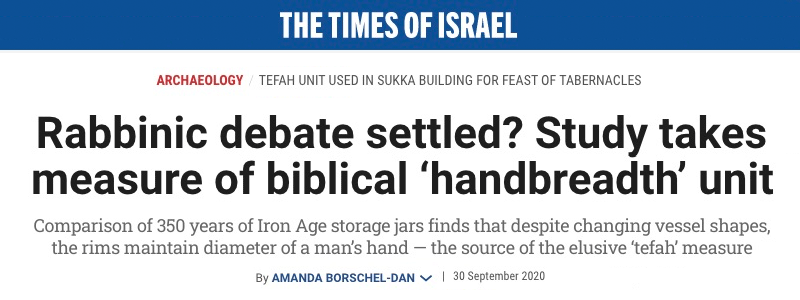
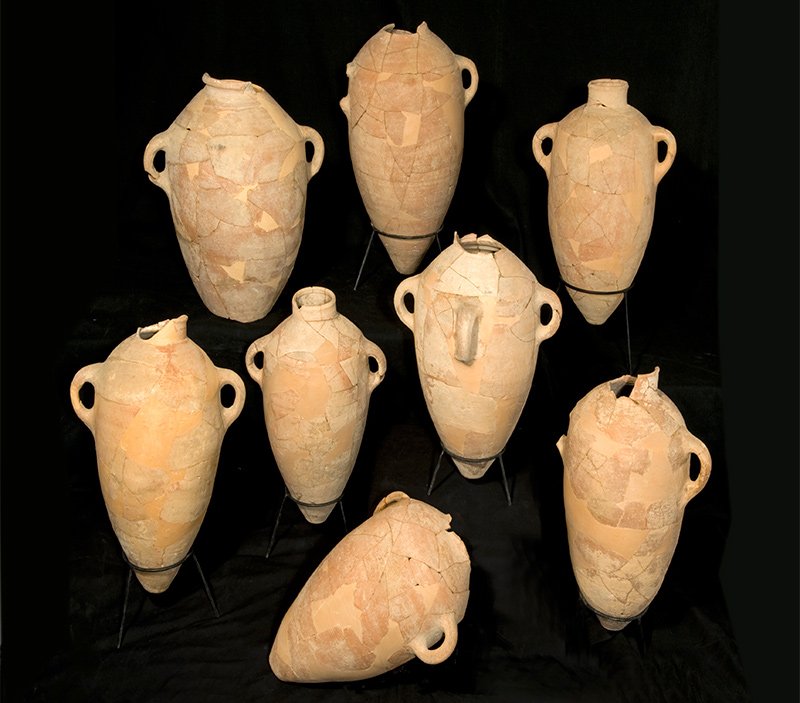
Pottery production was man’s work back in Iron Age Israel. A new Israeli study comparing the dimensions of hundreds of ceramic storage jars over 350 years of production discovered that the inner-rim diameter measure remained consistent with the width of a man’s hand, an elusive unit known from biblical times as a tefah.
The tefah unit is attested to in the Hebrew Bible (see Numbers 25:25 and 37:12), as well as in ancient Assyrian and Egyptian sources. But the precise measurement of the biblical unit has remained a matter of longtime rabbinical debate.
While Iron Age vessels’ body shapes and volumes morphed drastically over the centuries, their average inner-rim diameters — between 8.85 and 8.97 centimeters — appear to be a uniform Iron Age unit that corresponds with the width of the average male’s hand. Moreover, the study states that palm dimensions have barely changed in the past 3,000 years: The team used 1980 data from the United States Army, which, when ordering gloves for their male soldiers, found their men’s handbreadth mean value to be 8.67±0.48 centimeters.
Therefore, the elusive tefah unit can be confidently measured in modern male handbreadths.
The measure of the tefah unit is far from hypothetical in Jewish law today. In practical terms, the ancient measurement is still used for a variety of situations, including the upcoming Feast of the Tabernacles in which Jews’ makeshift huts are built according to prescribed biblical units.
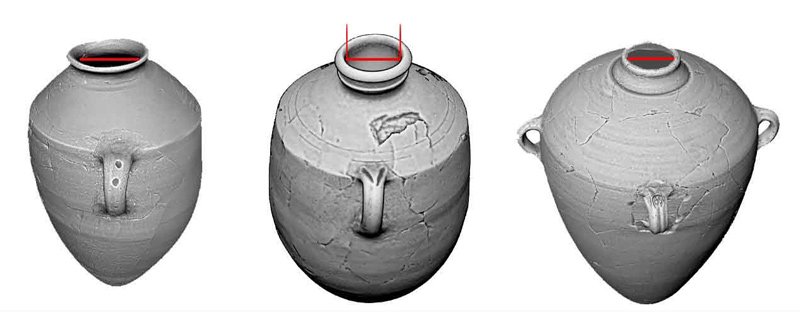
According to a Hebrew University press release, rabbis have tried to give modern conversions, with two leading theories that were posited by Avraham Chaim Naeh and the Chazon Ish, both 20th century pre-State Palestine Orthodox rabbis. “According to Rabbi Chaim Naeh, one tefah = 8 centimeters, whereas according to the Chazon Ish one tefah = 9.6 centimeters,” writes the press release, noting that the new study’s average tefah jar rim diameter is “squarely in between.”
A signature move
According to study co-author Ortal Harush, the standardized handbreadth jar rim diameters — dating from pre-Temple times to the early First Temple period — were very much a manufacturing “signature” among professional potters.
Harush, an expert in ceramic technology, said the Iron Age potters were experts — skilled craftsmen, versus amateurs who created almost disposable vessels for household use. Like the modern masters she has studied from India, these Iron Age men would have eschewed tools and instead used their hands to measure their jar rims. For these potters, making a standardized rim measurement was as instinctive as any number of mindless chores performed today.
“Just as you brush your teeth the same way every morning, without thinking about it,” Harush told The Times of Israel, these men would have used their hands in an innate, automatic way to finish assembling the tops of pots in a standardized manner. “The things you’re not thinking about — this is who you are.”
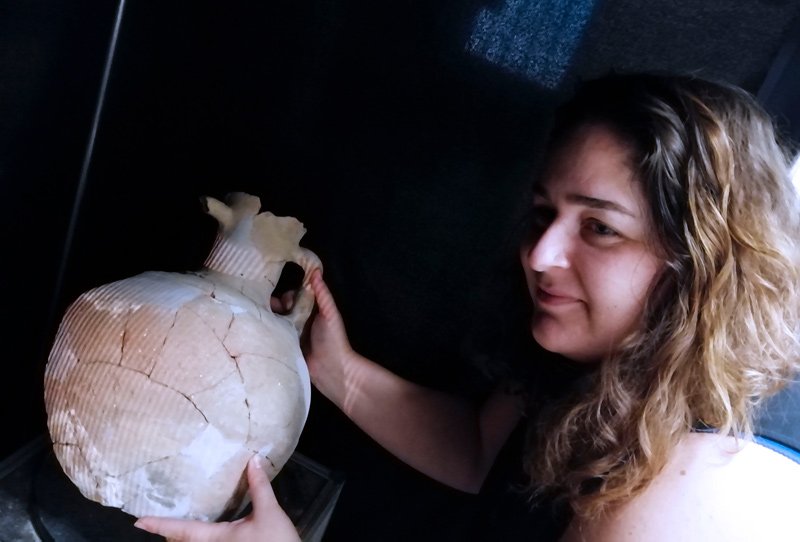
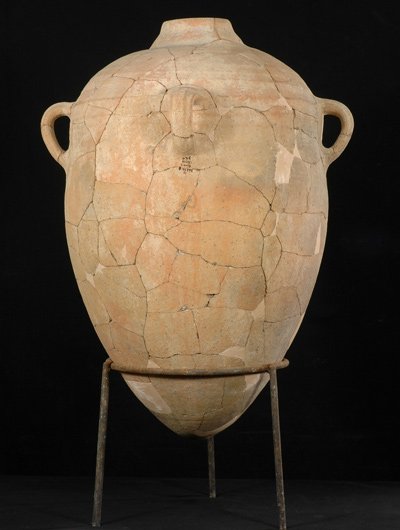
The study was conducted by Hebrew University of Jerusalem’s Harush, Israel Antiquities Authority’s Avshalom Karasik and Weizmann Institute’s Uzy Smilansky. Titled “The Morphology of Iron Age Storage Jars and Its Relation to the Handbreadth Measure (Biblical Tefach),” it was recently published in BASOR, the Bulletin of the American Schools of Oriental Research.
Harush said that the comparison ceramic study began coincidentally as she and Karasik chatted and compared notes on what they were working on side by side in the lab. It turned out they were both studying Iron Age pottery: Karasik worked on royal Judah Kingdom storage jars (8-7th century BCE) and Harush on “hippo” jars from northern Israel (Israelite Kingdom, 9th century BCE). They quickly realized that of all the measurements, only the rim measurements were consistent between the two pottery assemblages.
Under the direction of their supervisor, Smilansky, the pair looked at a third sample of Iron Age jars that was already in the database, an assemblage from Khirbet Qeiyafa (Judah Kingdom; early 10th century BCE). To their amazement they found the same consistent handbreadth measure.
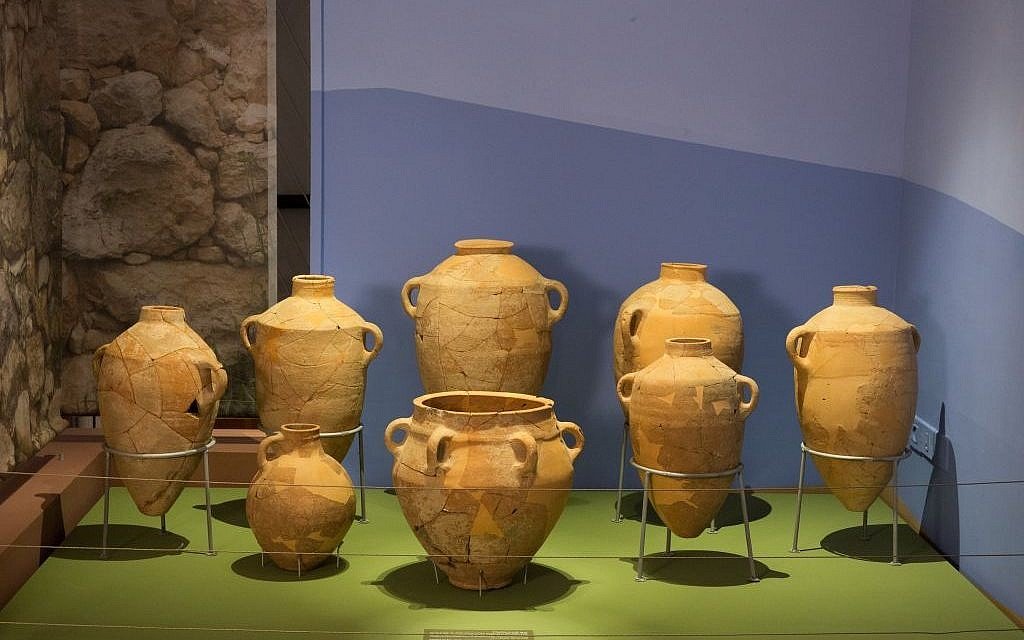
The team generated high precision 3D-digitized models of the 307 Iron Age jars, which all resulted in the same handbreadth measurement, regardless of the pots’ different production times, vessel shapes, volumes, and find locations.

The plot thickens
For a control group, the researchers randomly chose another assemblage that was already found in their database. They generated 3-D models of 259 Roman-era jars from Shuafat, near Jerusalem, and here — in a complete surprise to the scholars, said Harush — is where we see a shift in the potters’ gender balance.
The Shuafat jars, dated to the 1st century CE, exhibit the same consistent use of a handbreadth measure — but this time the hands were much smaller, leading the team to conclude they were most likely of females, said Harush.
The authors write, “Similar behavior was observed in the Roman ensemble, with one important difference — the observed distribution of the inner rim diameter is similar (but not identical) to the distribution of the handbreadth of the modern female.”
Again, the team compared the measures with available US Army data. “Quantitatively, the mean handbreadth for female soldiers is 7.82 ± 0.39 cm and for the Shoafat group it is 7.87 ± 0.79,” they write.
In the article and in a Hebrew University press release, efforts are made to tie the tefah measure of the pots to Jewish law dealing with purity and vessels. Harush said, measuredly, that it was perhaps one of the potters’ considerations in using the unit.
“Maybe they have rules, but I don’t know. We know of purity and impurity laws in later periods,” she said, noting that at least some of these pots were produced prior to the First Temple. “The spiritual consideration is one of the considerations , but eventually they produced the storage jars to deliver goods and for taxes.”
